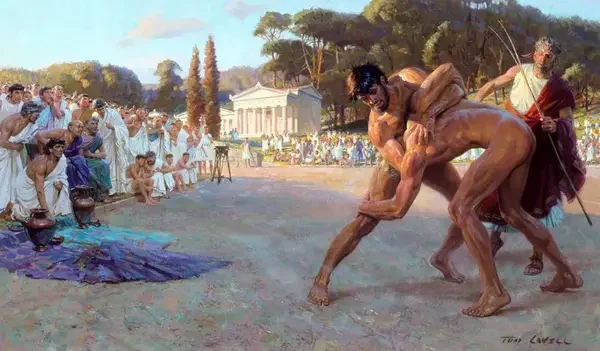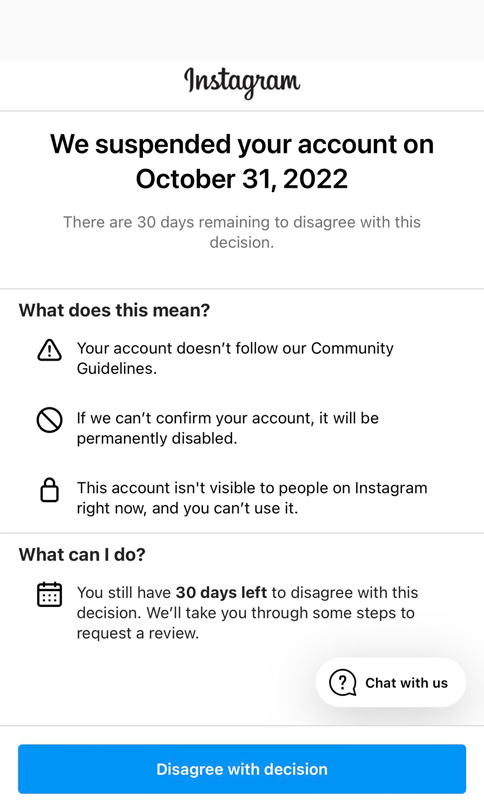The Naked Truth: From Marble Gods to Instagram Mods
There is something hilarious about the way we treat nudity. You can stand in front of Michelangelo’s David, six meters of perfectly carved marble man, and everyone will nod seriously, murmuring about Renaissance genius. But try posting a topless photo on Instagram, even if it is art, and you will be slapped with a “this goes against our community guidelines” faster than you can say “free the nipple.”
Michelangelo’s David
The same anatomy is celebrated in a museum, censored on social media, and sold behind a paywall. All at once. Humans are nothing if not inconsistent.
And this is not a modern problem. We have been playing ping pong with our feelings about nudity for thousands of years.
By That Arnold, for HEATWAVE.
The ancient way: naked and proud
If you were an Ancient Greek, being naked was basically a compliment. Your body was a temple, so why cover it? Athletes competed nude, statues showed gods and mortals in their birthday suits, and the word gymnasium literally means “place to be naked.”
It was a flex. Not “look at me, I am hot” but “look at me, I am the physical embodiment of beauty and strength.”
Not every ancient culture agreed. Some saw nudity as low status. But in Greece and Rome, the right kind of nude was an honor.
The medieval chill
Fast forward to medieval Europe, and the party is over. The Church had taken the wheel, and bare skin was now a shortcut to sin. The only nudes you might see were Adam and Eve grabbing for fig leaves or the damned writhing in hell.
The human body stopped being celebrated and started being covered. Nudity was now a moral problem, unless it came with a side of biblical guilt.
Renaissance: the big reveal
By the 1400s, artists rediscovered those ancient ideals and decided it was time to take the clothes off again. Donatello’s bronze David. Michelangelo’s marble David. Suddenly, the human form was back on the main stage, glorified in all its detail.
Not everyone clapped. Michelangelo’s David was so shocking to some that officials kept a removable metal fig leaf handy for important visitors. After the Council of Trent, the Catholic Church launched what became known as the Fig Leaf Campaign, a mass modesty makeover for Renaissance art.
For sculptures, that meant real fig leaves or carved ornaments. For paintings and frescoes, they went for painted fabric and drapery. In Michelangelo’s Last Judgment, poor Daniele da Volterra was hired to paint modesty cloths on dozens of figures, which earned him the lifelong nickname Il Braghettone — the breeches maker.
Fast forward: same drama, new outfits
Today, a nude painting in a museum is fine art. A nude photo on Instagram? Delete. Male nipples? Approved. Female nipples? Outrageous.
And then there is Florida, where a school principal lost their job in 2023 because some parents decided David was pornographic. A 500 year old statue. Pornographic. Let that sink in.
The paywall paradox
Here is where it gets extra weird. The same nude that will get deleted from Instagram can live happily on OnlyFans or Patreon. I know this from experience. My uncensored galleries and behind the scenes work live on Patreon, and somehow, once it is behind a paywall, it is no longer a violation.
In some ways, that is great. Creators can make a living without bowing to algorithmic morality. But it also turns nudity into a commodity. Not something you hide because it is shameful, but something you hide because it is profitable.
There is nothing wrong with that. Hustle is hustle. But it changes the way we think about the body. Where it appears and who can see it ends up deciding whether it is called art, porn, or exclusive content.
What is really going on
Nudity has always been about context. A marble statue in Florence? Art. A selfie in your bedroom? Risky. A topless beach? Depends on the country. A Patreon gallery? Suddenly it is just bonus content.
The body can sell a product, make a political statement, celebrate self love, or simply exist. And our reaction says more about us than about the skin itself.
Science is on the side of the naturists. Studies show that social nudity in safe environments can boost body image and lower shame. Seeing and being around real, unretouched bodies helps dismantle the insecurities we are trained to have.
Where HEATWAVE stands
We are not here to sell a fantasy. We are here to show reality. That does not mean every shot is a documentary, but it does mean the people in my photos are not just trying to bait subscribers. They are expressing something real. Comfort. Sensuality. Confidence. Sometimes vulnerability.
For me, a nude photograph is not about crossing a line. It is about erasing it. Just like the Renaissance artists fought to bring the nude back, I want to keep it visible now, without shame and without pretending it is anything other than human.
We have been having this debate for millennia. From naked Olympians to Renaissance fig leaves to TikTok moderators deciding if your bikini video is “suggestive.” The body is not the problem. The problem is the inconsistent, often hypocritical way we react to it.
Maybe one day we will not need campaigns like Free the Nipple. Maybe a nipple will just be a nipple. Until then, I will keep making work that celebrates the unapologetic, unfiltered body, whether it is on a marble pedestal, in my camera, or behind a Patreon login.
With lots of love,
Arnold
Founder of HEATWAVE
If this made you feel something…
Feel free to support us. This kind of work takes time and care.
The webshop is open, and so is the comment section on Instagram.
LINKS
That Arnold on Instagram: @that.arnold






